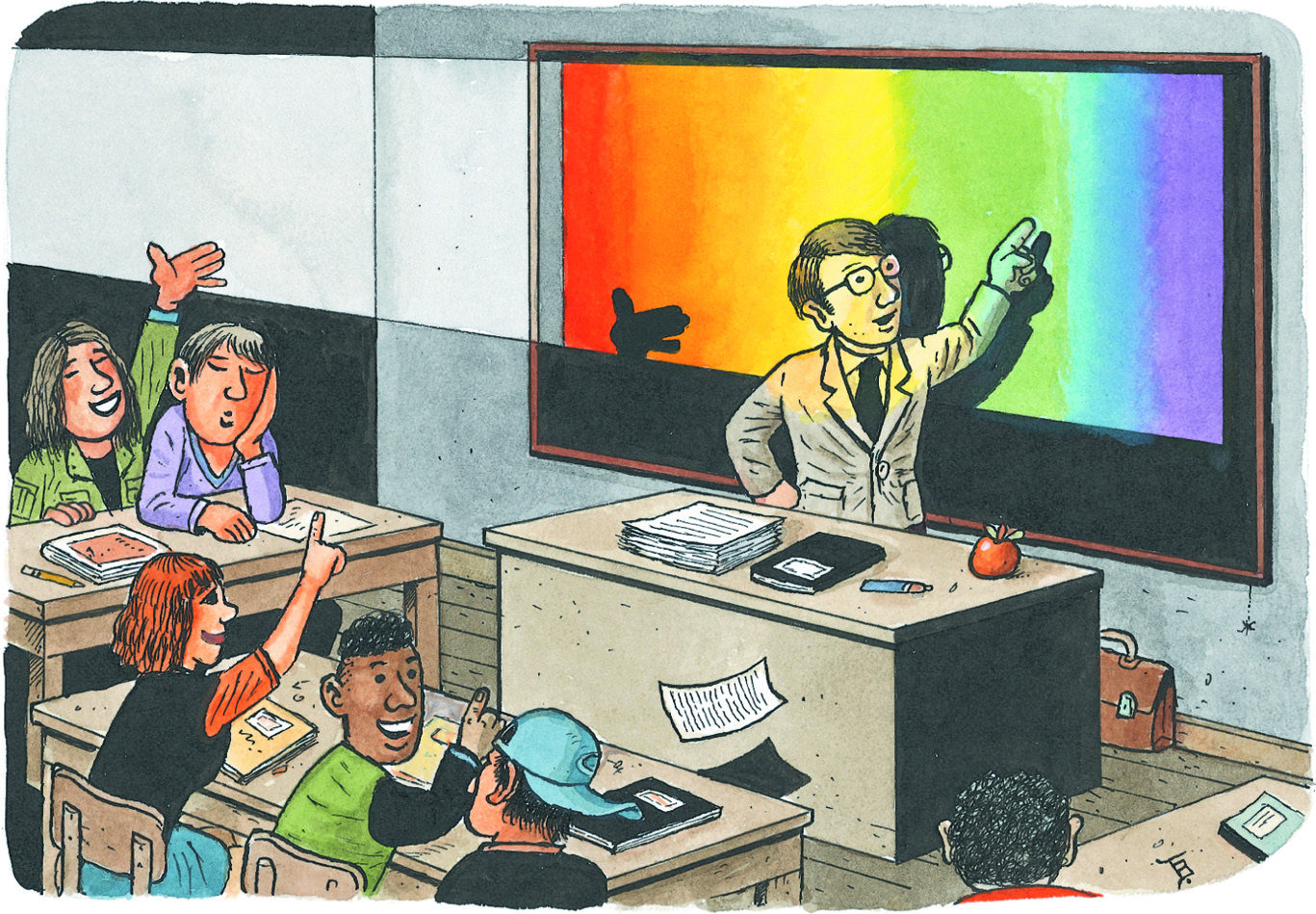
Overview
In this section you will find materials that support the implementation of EarthComm, Section 7: The Electromagnetic Spectrum.
Learning Outcomes
- Carry out an investigation of the visible part of the electromagnetic spectrum.
- Analyze and interpret data on the frequencies of the electromagnetic spectrum.
- Obtain information about how astronomers use electromagnetic radiation to study objects and events in space.
Inquiring Further
- To learn more about using radio waves to study distant objects, visit the following web site:
Radio Observatories and the Very Large Array, National Radio Astronomy Laboratory
Find out how scientists study distant objects using the VLA and radio waves.
Very Large Array: FAQ, National Radio Astronomy Laboratory
Learn more about the VLA.
- To learn more about detection of electromagnetic radiation, visit the following web sites:
How Landsat Works, NASA
Learn how sensors and detectors are used to detect and measure electromagnetic radiation in different bands.
The Very Large Array and the Very Long Baseline Array, National Radio Astronomy Observatory
Read about the radio telescope arrays that allow scientists to look deep into space.
- To learn more about technologies that use electromagnetic radiation, visit the following web sites:
Invention of the Microwave, The Great Idea Finder
Learn more about the history and technology of the microwave oven.
How does an X-ray machine work?, Howstuffworks
Learn how an x-ray machine produces x-rays.
Resources
To learn more about this topic, visit the following web sites:
The Nature of Electromagnetic Radiation
The Electromagnetic Spectrum, NASA
This home page offers links to various topics in the astronomer's toolbox.
All About Spectra, University of Illinois
Try another brief overview on electromagnetic spectrum and electromagnetic wave radiation.
Astronomy and the Electromagnetic Spectrum
An Introduction to Radio Astronomy, National Radio Astronomy Observatory
The NRAO web site offers an education section with various resources including background information and a photo gallery. The Introduction to Radio Astronomy is a particular page that offers answers to frequently asked questions about radio astronomy, an article about the VLA and VLBA in New Mexico, and more.
Using Electromagnetic Radiation to Understand Celestial Objects
Amazing Space, Space Telescope Science Institute
Explore space with the Hubble Telescope. Learn what different colors say about stars by clicking on Star Light, Star Bright.
Animations and Video
To view animations and video related to this topic, visit the following web sites:
Launchpad: Neon Lights - Spectroscopy in Action, NASA
Locate and watch the NASA eClip titled, "Launchpad: Neon Lights - Spectroscopy in Action." This video examines emission spectrums and absorption spectrums and their application to objects in space.
The Electromagnetic Spectrum Video Series & Companion Book, NASA
Follow links to videos on a variety of topics related to the electromagnetic spectrum.
